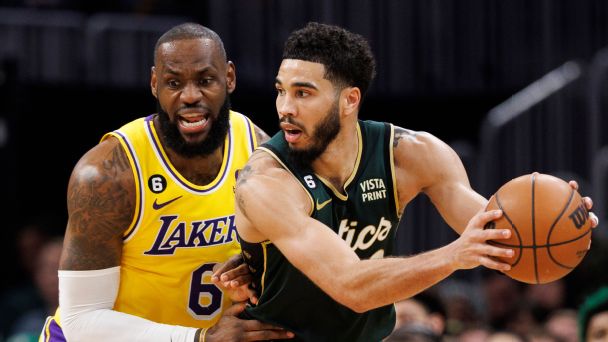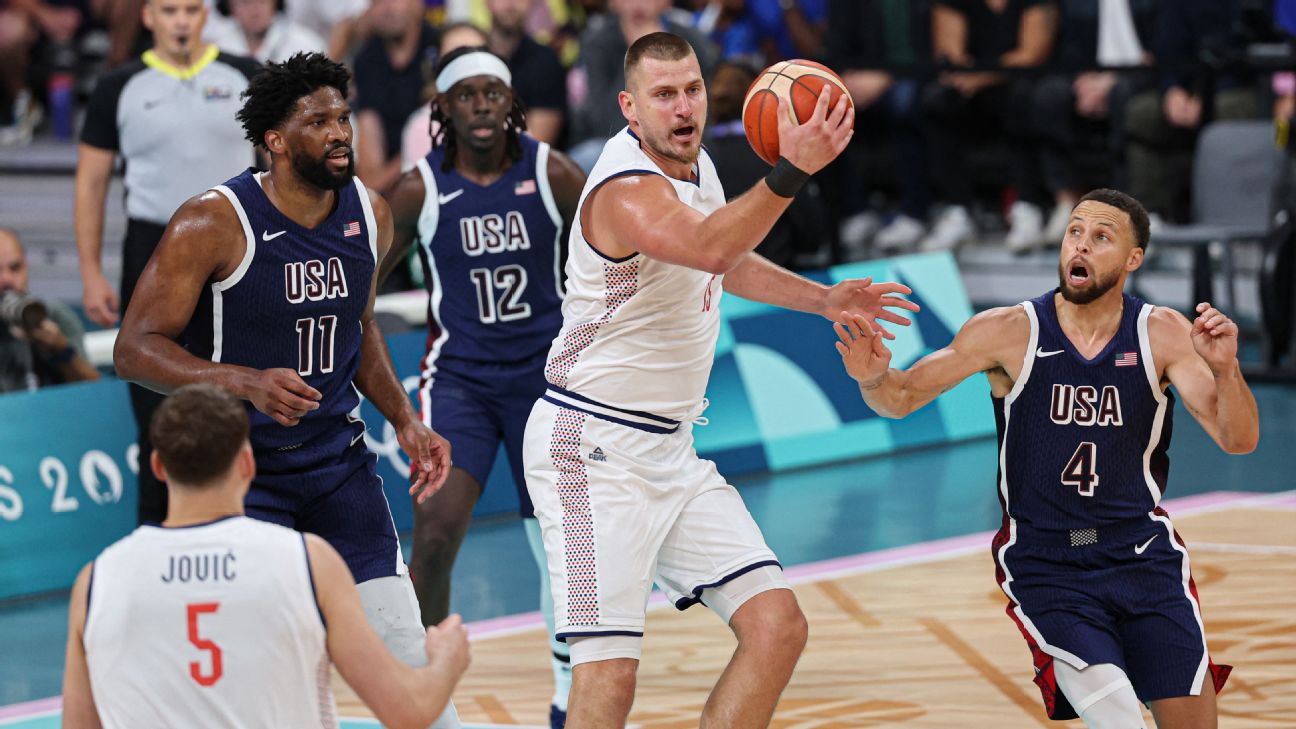In sports, including the NBA, the concept of team “continuity” can be a funny thing.
On one hand, bringing back a bunch of players for continuity’s sake isn’t necessarily a winning formula. But using an extreme example, think about a winless squad that returns the same roster: The general manager probably won’t draw rave reviews, but we know that constant churn — among players, coaches, front-office staff and other key figures — is why losing teams often stay down.
My previous research has shown that, even after controlling for how good or bad a team was, franchises with more turmoil around important roles tend to do worse going forward.
There’s a fine balance to be struck between knowing when to preserve a roster … and when to strategically change everything up.
With that in mind, we have ranked where every NBA team is on the spectrum of continuity, from those that have most of their players back to those that have torn it all down. To measure this, we’ll look at a team’s combined ranking across two different dimensions: the share of minutes played and the share of estimated RAPTOR wins above replacement (WAR) for the franchise from the previous three seasons (weighted by recency, such that last season gets a weight of 6, the year before that a 4, and the year before that a 1) from players on the team’s current roster.
NBA teams with a high ranking in each share — meaning they brought back more of the players who logged minutes and generated value for the team in recent seasons, especially in 2023-24 — have the greatest continuity.
We’ll present our overall ranking, based on a sum of the ranks in each category, and then dive into the top and bottom five teams — while also listing each team’s leading players (by percentage of three-year weighted WAR produced for the franchise) who will and will not be on the roster in 2024-25.
Jump to:
Most continuity | Least continuity
Full rankings for all 30 NBA teams
Share of 3-year minutes returning: 75.7% (3rd)
Share of 3-year WAR returning: 94.4% (2nd)
Leading returnees: Fred VanVleet (23.0%), Alperen Sengun (14.4%), Amen Thompson (13.1%), Jalen Green (9.9%), Tari Eason (9.3%)
Leading losses: Kenyon Martin Jr. (4.5%), Kevin Porter Jr. (2.6%), Eric Gordon (1.4%)
Though the Rockets failed to make the playoffs last season, it was a season of growth for Houston, which improved its net rating by 9.0 points per 100 possessions from 2022-23. After years of losing with one of the youngest teams in the NBA (mean age 25.9), the Rockets also provided a potential blueprint for how teams should emerge from a tanking era, with a mix of savvy veterans (VanVleet) and young players coming into their own (Green, Sengun, Thompson).
Houston will look to continue this upward trend this season, as the Rockets bring back each of their top 12 WAR earners — a group that represents 76% of the franchise’s three-year weighted minutes played and a whopping 94% of its three-year weighted WAR.

2. Orlando Magic
Share of 3-year minutes returning: 77.1% (2nd)
Share of 3-year WAR returning: 91.0% (4th)
Leading returnees: Franz Wagner (27.0%), Jalen Suggs (13.3%), Paolo Banchero (11.5%), Jonathan Isaac (9.0%), Moritz Wagner (8.1%)
Leading losses: Joe Ingles (5.9%), Markelle Fultz (4.8%), Mo Bamba (1.3%)
It might not be a coincidence that the two leading teams in continuity have also been among the NBA’s youngest (mean age is 25.4) over the past few seasons — as well as the most improved. After years of stockpiling prospects, both Houston and Orlando have found cores that they can build around. For the Magic, that group revolves around Wagner, whom the team signed to a five-year, $224 million contract
But Orlando will also return Suggs, Isaac and Moritz Wagner, all of whom rounded out the team’s top five in WAR last season. The only member of the Magic’s top 10 players by WAR in 2023-24 who isn’t returning is Ingles, who signed with the Minnesota Timberwolves this offseason. That means the vast majority of the group from Orlando’s rise from 21 wins in 2020-21 to 47 (with a playoff appearance) last season will be around for what’s next.

3. Boston Celtics
Share of 3-year minutes returning: 80.6% (1st)
Share of 3-year WAR returning: 89.5% (6th)
Leading returnees: Jayson Tatum (21.8%), Derrick White (15.7%), Jaylen Brown (14.1%), Al Horford (7.3%), Sam Hauser (7.2%)
Leading losses: Marcus Smart (3.0%), Robert Williams III (2.7%), Malcolm Brogdon (2.0%)
One of the defining storylines of the Celtics’ 2023-24 championship season was basketball operations boss Brad Stevens’ willingness to go out on a limb to trade away key players of the team’s previous core — namely, Smart and Williams. But there is also an element of continuity at the heart of Boston’s success, as typified by Tatum and Brown’s persistence paying off after seven years together.
That’s part of why the Celtics are high in the ranking, as no team will bring back more of its weighted minutes from the past three seasons in 2024-25. Boston will also run back its title defense with each of its top 11 players in WAR from last season; Svi Mykhailiuk (1.0 WAR) is the only offseason departure who was worth more than 0.1 wins to last year’s Celtics.
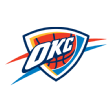
4. Oklahoma City Thunder
Share of 3-year minutes returning: 70.4% (6th)
Share of 3-year WAR returning: 92.3% (3rd)
Leading returnees: Shai Gilgeous-Alexander (35.7%), Jalen Williams (16.1%), Chet Holmgren (9.4%), Luguentz Dort (8.5%), Isaiah Joe (7.2%)
Leading losses: Josh Giddey (8.5%), Lindy Waters III (1.2%), Isaiah Roby (0.4%)
Returning to the theme of rising young and talented teams, we have the Thunder (mean age 24.5), one of the great breakout stories of last season. While they came up short in the second round of the playoffs, Oklahoma City earned the top seed in the West behind the MVP-caliber improvement of 25-year-old Gilgeous-Alexander, in addition to an ensemble cast of contributors such as Williams and Holmgren.
Almost all of that core will be back, as nine of the top 10 Thunder players by WAR in 2023-24 return. The only exception is Giddey, who was dealt to the Chicago Bulls for Alex Caruso (a better player by WAR last year, 5.8 to 3.8) in June.
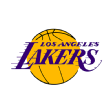
5. Los Angeles Lakers
Share of 3-year minutes returning: 65.7% (10th)
Share of 3-year WAR returning: 94.8% (1st)
Leading returnees: LeBron James (34.0%), Anthony Davis (31.4%), Austin Reaves (15.2%), D’Angelo Russell (11.1%), Rui Hachimura (7.1%)
Leading losses: Thomas Bryant (1.8%), Troy Brown Jr. (1.7%), Malik Monk (1.5%)
When we think of James-led squads over the years — whether in Cleveland, Miami or Los Angeles — we see a rotating cast of co-stars next to him, along with plenty of other roster shakeups. Therefore, it’s interesting to see the Lakers here as one of the most stable teams heading into 2024-25, with each of last season’s seven highest WAR earners coming back, in addition to having the league’s highest share of weighted WAR returning from the past three years.
It’s up for debate whether this is a good thing, though. Los Angeles has been outclassed by the Denver Nuggets in each of the past two postseasons — and aside from Reaves, the Lakers haven’t had enough top-tier players around James and Davis to compete at the highest level. Now they’re bringing basically that same group back to try again.
Seth Greenberg assesses the obstacles JJ Redick will have to hurdle as coach of the Los Angeles Lakers.
Share of 3-year minutes returning: 45.7% (28th)
Share of 3-year WAR returning: -2.1% (30th)
Leading returnees: Corey Kispert (6.7%), Jared Butler (3.4%), Marvin Bagley III (2.4%)
Leading losses: Deni Avdija (20.5%), Kristaps Porzingis (17.0%), Daniel Gafford (16.3%), Delon Wright (13.9%), Bradley Beal (13.4%)
The Wizards are in a different phase of rebuilding than the young teams at the top of our continuity list, as Washington is far from finding a core of key players it can build around. Only one (Butler) of the team’s top six WAR earners from last season will be back in 2024-25, indicative of the only NBA team that somehow has a negative percentage of three-year WAR returning.
How is that possible? More of the team’s returning players produced at a sub-replacement level — Jordan Poole (-3.3%), Bilal Coulibaly (-5.3%) and Johnny Davis (-7.1%), among others — these past three seasons than an above-replacement level. Things got even worse when Avdija, the team’s three-year weighted WAR percentage leader, was traded to the Portland Trail Blazers in July.

T-28. Toronto Raptors
Share of 3-year minutes returning: 41.9% (29th)
Share of 3-year WAR returning: 40.2% (27th)
Leading returnees: Scottie Barnes (27.1%), Jakob Poeltl (10.1%), Chris Boucher (7.9%)
Leading losses: Pascal Siakam (24.2%), Gary Trent Jr. (16.3%), OG Anunoby (16.1%), Fred VanVleet (12.6%), Dennis Schroder (5.0%)
Committing to move on from the remnants of the 2019 title-winning squad, the Raptors find themselves near the bottom of the continuity list. The team lost more than 50% of its weighted WAR from the past three seasons when it parted ways with Siakam, Anunoby and VanVleet, and another 16% when Trent signed with the Bucks in July.
Unlike Washington, the Raptors can argue they are bringing back players who might be a part of Toronto’s next contender squad, in the form of Barnes, RJ Barrett and Immanuel Quickley — the latter two of whom were acquired from the New York Knicks in the midseason trade that sent Anunoby packing. Whether the rest of the roster has continuity or not, it’s good to have those types of building blocks on hand.

T-28. Philadelphia 76ers
Share of 3-year minutes returning: 33.1% (30th)
Share of 3-year WAR returning: 51.2% (26th)
Leading returnees: Joel Embiid (24.8%), Tyrese Maxey (18.8%), Kelly Oubre Jr. (4.9%)
Leading losses: Tobias Harris (15.0%), De’Anthony Melton (9.6%), James Harden (6.8%), Paul Reed (5.4%), Nicolas Batum (3.1%)
Just as more continuity isn’t always better, the Sixers are an example of how less of it isn’t necessarily a terrible thing. Philadelphia lands here on the ranking because only three of its nine leading WAR earners from 2023-24 are still on the roster, to go with nearly half of its weighted three-year WAR departing — and losing 67% of its three-year weighted minutes, the highest share in the league.
And yet, the Sixers also have the league’s third-best odds of winning the title (+750) with an over/under win total of 52.5, according to ESPN BET. That’s because, amid the discontinuity, the 76ers still managed to bring back WAR leaders Embiid and Maxey, then used the salary-cap space freed up by those other departures to add free agent Paul George as a third star to potentially put them over the top.
Share of 3-year minutes returning: 47.1% (26th) Leading returnees: Nic Claxton (15.1%), Cameron Johnson (8.2%), Cam Thomas (5.0%) One of the purposes of an exercise like this is to identify teams that look entirely different than they did just a few years ago. And few teams fit that description better than the Nets, who were still rolling with their failed Durant-Irving-James Harden superteam at the beginning of our three-year window — and are now rebuilding around Claxton, Johnson and Thomas after trading Bridges to the crosstown Knicks for a bunch of draft picks and other assets in July. With no real identity and almost two-thirds of their value from the past three seasons scattered across the league, the Nets are a textbook example of a team sorely lacking in continuity. Share of 3-year minutes returning: 49.9% (25th) Leading returnees: Miles Bridges (28.0%), LaMelo Ball (25.7%), Mark Williams (15.4%) The Hornets are in a unique place on the continuity spectrum. If we were just looking at last season, their ranking wouldn’t be this low — Charlotte will return four of its top five WAR producers from 2023-24 (Bridges, Ball, Williams and Brandon Miller), as well as seven of its top nine — with Rozier, who was dealt to Miami at the trade deadline, and Gordon Hayward, who was traded to Oklahoma City and then retired, serving as the only notable absences. But this is a multiyear list, even if it is weighted toward more recent seasons, and Charlotte has already turned over most of the nucleus that powered its 43-win team from 2021-22. That means new president of basketball operations Jeff Peterson inherits a team that is still working on forming a consistent core for the future.

27. Brooklyn Nets
Share of 3-year WAR returning: 35.7% (28th)
Leading losses: Mikal Bridges (16.6%), Kevin Durant (11.9%), Kyrie Irving (7.0%), Royce O’Neale (6.6%), Spencer Dinwiddie (6.2%)
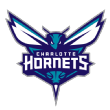
26. Charlotte Hornets
Share of 3-year WAR returning: 56.9% (25th)
Leading losses: Terry Rozier (38.8%), Gordon Hayward (19.8%), Kelly Oubre Jr. (12.2%), Mason Plumlee (9.8%), Jalen McDaniels (7.1%)
